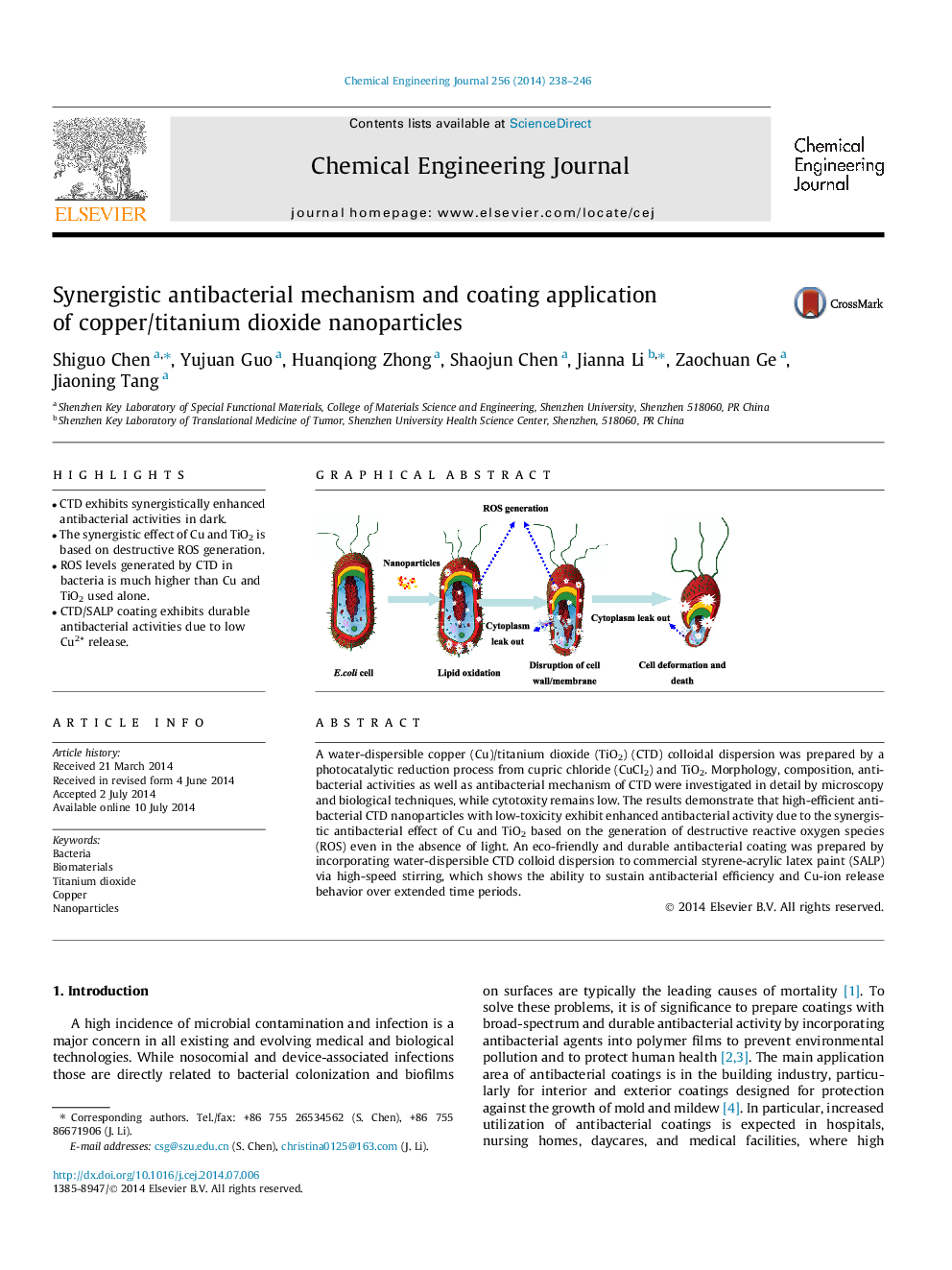| Article ID | Journal | Published Year | Pages | File Type |
|---|---|---|---|---|
| 147005 | Chemical Engineering Journal | 2014 | 9 Pages |
•CTD exhibits synergistically enhanced antibacterial activities in dark.•The synergistic effect of Cu and TiO2 is based on destructive ROS generation.•ROS levels generated by CTD in bacteria is much higher than Cu and TiO2 used alone.•CTD/SALP coating exhibits durable antibacterial activities due to low Cu2+ release.
A water-dispersible copper (Cu)/titanium dioxide (TiO2) (CTD) colloidal dispersion was prepared by a photocatalytic reduction process from cupric chloride (CuCl2) and TiO2. Morphology, composition, antibacterial activities as well as antibacterial mechanism of CTD were investigated in detail by microscopy and biological techniques, while cytotoxity remains low. The results demonstrate that high-efficient antibacterial CTD nanoparticles with low-toxicity exhibit enhanced antibacterial activity due to the synergistic antibacterial effect of Cu and TiO2 based on the generation of destructive reactive oxygen species (ROS) even in the absence of light. An eco-friendly and durable antibacterial coating was prepared by incorporating water-dispersible CTD colloid dispersion to commercial styrene-acrylic latex paint (SALP) via high-speed stirring, which shows the ability to sustain antibacterial efficiency and Cu-ion release behavior over extended time periods.
Graphical abstractFigure optionsDownload full-size imageDownload as PowerPoint slide
